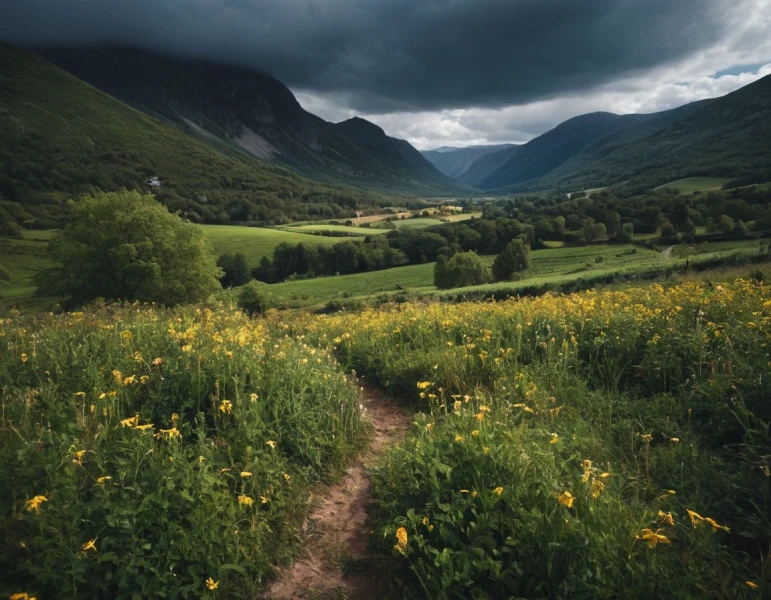Educa UNIVERSITY|ART AND ARCHITECTURE
Natural Landscapes: The Wild Beauty That Changed My Life
Related Masters
Natural Landscapes: The Wild Beauty That Changed My Life
I don't know about you, but I, Pablo García, have seen natural landscapes that take your breath away, those that make you think: "Is this real?". And when we talk about natural landscapes, we are talking about a wonder that has evolved over millions of years, without human intervention, with nature as the only architect.
Let me tell you from my experience what they are, how they are formed and why they are so important. I've been exploring mountains, deserts, rivers for decades.... I've seen it all! So, hold on, because here comes a journey through the wildest and purest nature you've ever known.
What are natural landscapes?
To begin with, a natural landscape is, basically, any area that nature has shaped by itself, without direct human intervention. Here we are talking about mountains, rivers, valleys, forests, deserts, coasts.... Places where nature is the only queen and mistress.

One of the most fascinating elements of natural landscapes is how each one has a story to tell. Mountains that have been raised by tectonic movements, canyons formed by river erosion, or deserts that are the result of millions of years of drought. Each landscape is the result of geological and climatic processes that are not visible to the naked eye, but are there, working invisibly.
What do all these landscapes have in common? They make us feel small, and that's good! They remind us that we are just one part of a much larger system. The relief, water, soil, fauna and flora are the key elements that make these places unique.
Types of natural landscapes: no two are alike!
Now, on to what we came for. If you're wondering how many types of natural landscapes there are, I'll tell you that there are several, but I'll simplify them for you:
1. Mountains and mountain ranges
Mountains are, without a doubt, one of my great passions. There is nothing like being at the top of a mountain range, with the peaks all around you and the clean air hitting your face. Impressive examples like the Himalaya or the Andes take your breath away. Mountains are formed by the collision of tectonic plates, and what we see today is the result of millions of years of brutal forces at work beneath the earth.
2. Forests: The lungs of the planet
Tropical forests, temperate forests, and taigas are other types of natural landscapes that never cease to amaze. The Amazon is the most famous example. In my years touring Latin America, I was able to see the impressive biodiversity that inhabits these forests. It's hard to describe what it feels like to walk under trees that seem to touch the sky, and hear animals you've probably never seen before.
3. Deserts: Arid Beauty
Many people think of deserts as empty places, but they couldn't be more wrong. Deserts, like the Sahara or the Atacama, are landscapes full of life adapted to extreme conditions. My first time in the Sahara was unforgettable. The vastness, the silence.... It's a different kind of beauty, but no less impressive.
4. Coasts and coastlines: Where the sea embraces the land
The coasts have that magic of being a border between two worlds: the sea and the land. Beaches, cliffs, coral reefs... Every corner has a unique story. The Great Barrier Reef in Australia is a perfect example. The marine biodiversity here is overwhelming.
5. Wetlands and mangroves: The perfect balance
I will never forget my first trip to the Everglades in Florida. There I discovered how important wetlands are for the planet. Not only do they act as natural water filters, but they are also a crucial habitat for many species.
How do natural landscapes form?
Well, I've already told you about the types of landscapes, but how do they form? It's all about time and geological processes. Tectonic movements, erosion, sedimentation, climatic changes.... Nature is not in a hurry, but it is very efficient.
- Erosion: Wind, water and ice are mainly responsible for carving landscapes over time. Imagine a river flowing for millions of years, carving a deep canyon, like the Grand Canyon((.
- Tectonic movements: Mountains and ranges, as I mentioned to you before, are formed by the collision of tectonic plates. The Himalayas, for example, continue to grow as the Indian and Eurasian plates continue to collide(.
The importance of natural landscapes
As someone who has traveled the world in search of these landscapes, I can tell you that their importance goes beyond their scenic beauty. They are vital to the planet. Here's why:
- Biodiversity: Natural landscapes are home to thousands of species. The disappearance of a natural landscape affects not only the species that inhabit it, but also us, as we depend on these ecosystems for air, water and food(.
- Tourism: Let's not kid ourselves, many people travel to these landscapes because they are breathtaking. From Iguazu Falls to the Galapagos Islands, tourism in natural landscapes moves billions of dollars(.
Conservation of natural landscapes
I realized some time ago that these landscapes are in danger. Human action, whether through agriculture, mining or deforestation, is destroying what nature has taken millions of years to create. Fortunately, there are initiatives to protect these places, such as national parks and nature reserves. But we need to do more.
Faculties
Trainings
The faculties embrace diverse academic disciplines and fields of study, opening doors to new perspectives and exploring different spheres of wisdom in a constantly evolving world.














